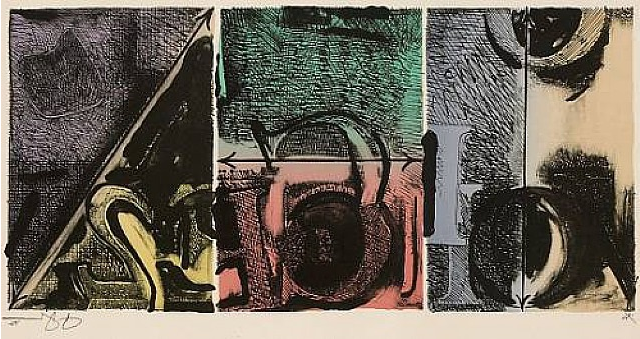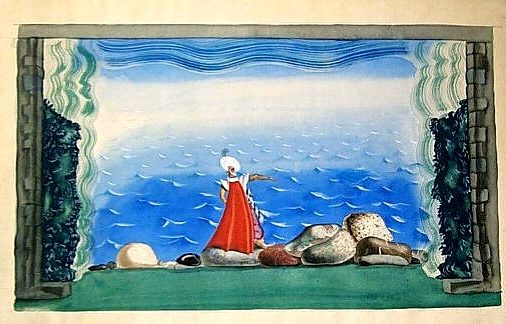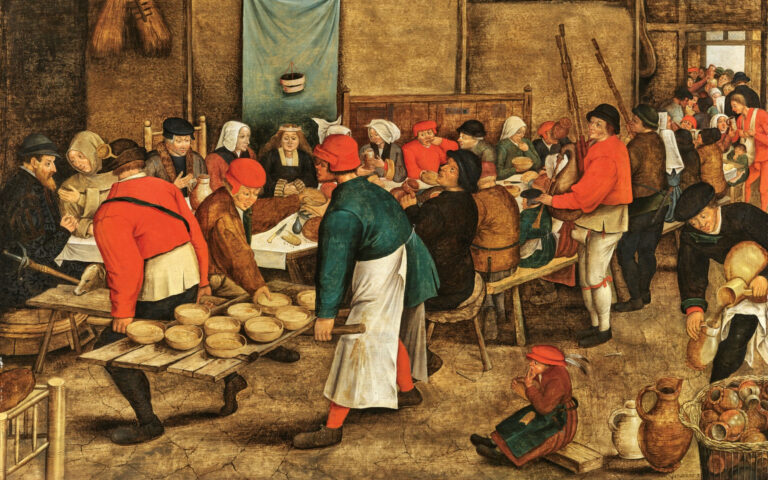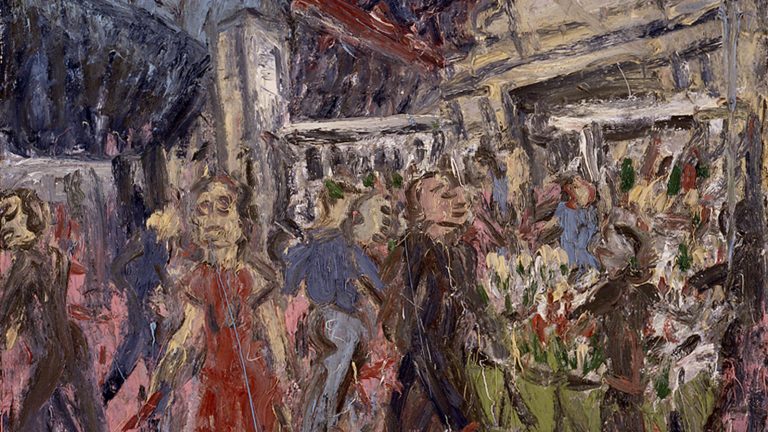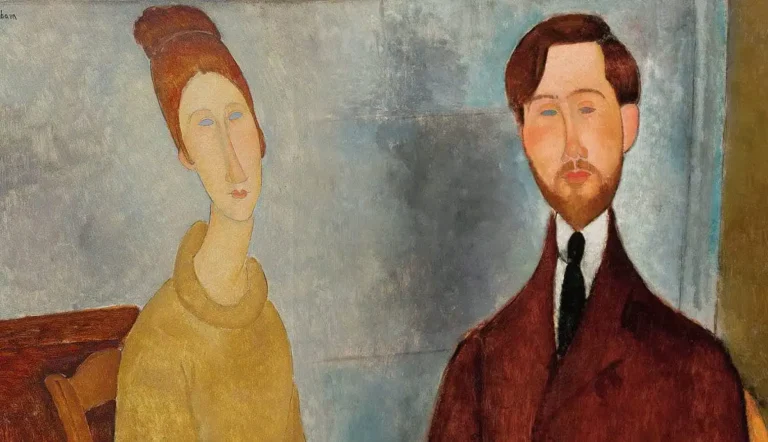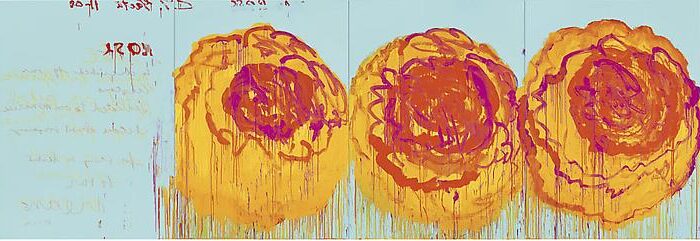Jasper Johns, Painter: Pioneering American Artist of the Neo-Dada Movement
Born: May 15, 1930, Augusta, Georgia, U.S.
Art Movement: Abstract Expressionism, Neo-Dada, Pop Art
Nationality: American
Influenced By: Robert Rauschenberg
Institution: University of South Carolina and Parsons School of Design
Jasper Johns, Painter: Pioneering American Artist of the Neo-Dada Movement
Early Life and Influences
Jasper Johns‘ formative years shaped his artistic vision through his southern upbringing, educational pursuits, and significant creative relationships. These early experiences laid the groundwork for his revolutionary approach to art.
Beginnings in Augusta, Georgia
Jasper Johns was born on May 15, 1930, in Augusta, Georgia. His early childhood was marked by family disruption when his parents divorced. Following this separation, Johns moved to rural South Carolina to live with his paternal grandparents.

Edingsville, 1990, by Jasper Johns
This rural southern upbringing exposed Johns to a different America than the urban art centers where he would later flourish. The isolation and distinct visual culture of the South influenced his perspective on American imagery and symbols.
Johns spent much of his youth in South Carolina, graduating as valedictorian from Edmunds High School in 1947. This academic achievement highlighted his intelligence and dedication, traits that would serve him well in his artistic career.
Education and Service
After high school, Johns briefly attended the University of South Carolina, marking his first formal exposure to art education. However, his academic journey was interrupted when he was drafted to serve during the Korean War.
Following his military service, Johns moved to New York City to pursue his artistic ambitions. He studied at the Parsons School of Design, though his most significant artistic education came through his immersion in New York’s vibrant art scene.
In New York, Johns encountered the abstract expressionism movement that dominated American art in the 1950s. Rather than simply adopting this style, Johns began developing his own artistic language that would challenge prevailing notions about art and representation.
Relationship with Robert Rauschenberg
Johns’ friendship and creative partnership with fellow artist Robert Rauschenberg profoundly shaped his early career. The two met in New York in the early 1950s and quickly developed a close personal and professional relationship.
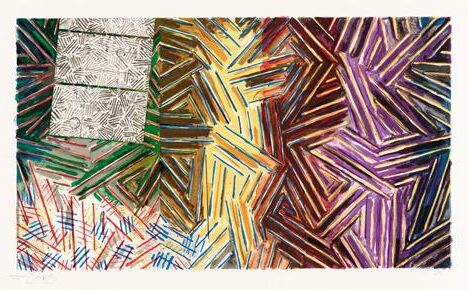
Between the Clock and the Bed, 1989, by Jasper Johns
Rauschenberg and Johns shared a studio building in lower Manhattan, creating an environment of mutual inspiration and criticism. Their collaborative spirit helped both artists break from abstract expressionism and develop new approaches to art-making.
Together, they explored the incorporation of everyday objects and imagery into fine art. This approach, which would later influence Pop Art, represented a significant departure from the emotional, gesture-driven work of their contemporaries.
Johns and Rauschenberg also introduced each other to influential figures in the New York art world, helping to advance their careers and spread their artistic innovations.
Artistic Style and Development
Jasper Johns’ creative journey marks a significant evolution in American art history. His distinctive approach to familiar symbols and innovative techniques established him as a bridge between Abstract Expressionism and Pop Art movements.
Transition from Abstract Expressionism
Jasper Johns emerged in the 1950s when Abstract Expressionism dominated the American art scene. Unlike the emotional and gestural work of artists like Jackson Pollock, Johns developed a more controlled and intellectual approach. His breakthrough came in 1954-55 with “Flag,” which challenged viewers to reconsider how they perceive everyday objects.
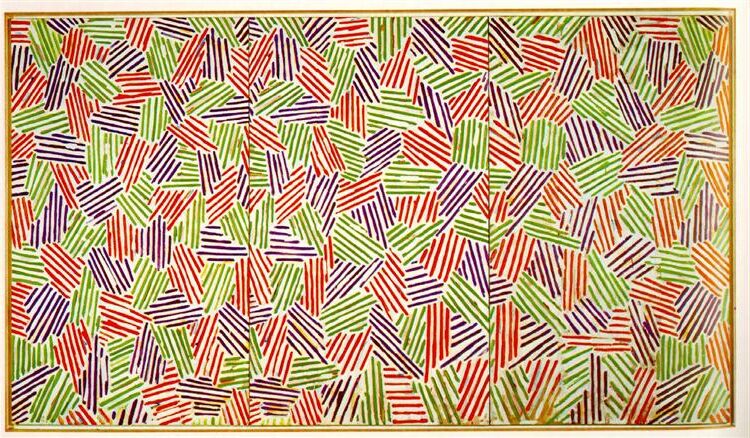
Scent, 1973–74, by Jasper Johns
Johns’ work created distance from the highly subjective nature of Abstract Expressionism. He focused on what he called “things the mind already knows” – recognizable images stripped of emotional content.
His paintings featured thick, textured surfaces that emphasized the physical qualities of paint while maintaining recognizable imagery. This approach created tension between representation and abstraction that became central to his artistic identity.
Incorporation of Objects and Symbols
Johns famously used common symbols like flags, targets, numbers, and letters as his subject matter. These weren’t simply representations but became objects themselves through his treatment.
His choice of familiar imagery allowed viewers to focus on his technique rather than trying to decipher meaning. The American flag, a recurring motif, functioned simultaneously as a symbol and an arrangement of shapes.
Johns often employed encaustic – a technique using heated beeswax mixed with pigments – which created distinctive textured surfaces. This method preserved brushstrokes and added a physical dimension to his paintings.
He incorporated real objects into his works, blurring the line between painting and sculpture. This approach showed influence from Marcel Duchamp’s readymades and challenged traditional boundaries of art.
Exploration of Printmaking
Johns became one of America’s most innovative printmakers, exploring lithography, etching, and screenprinting with the same rigor as his painting. His printmaking practice began in 1960 at Universal Limited Art Editions (ULAE).
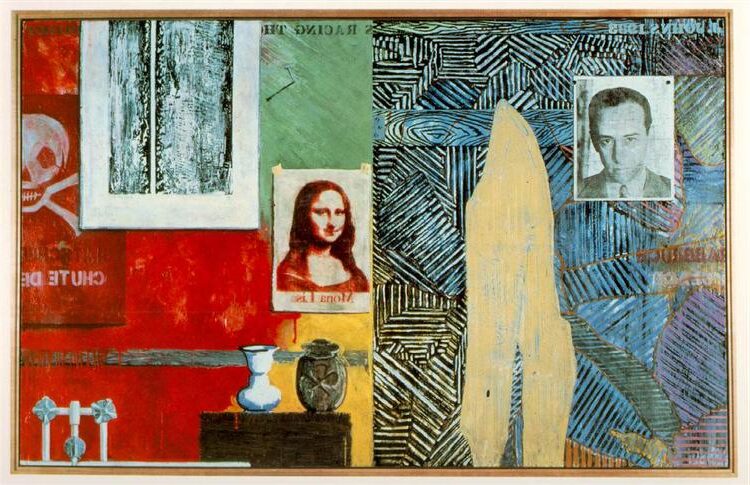
Racing Thoughts, 1983, by Jasper Johns
He approached prints not as reproductions but as unique artistic expressions. Johns often created variations of the same image across different media, allowing him to explore how medium affects perception.
His printmaking techniques were highly experimental. He would sometimes incorporate unusual materials or create textured surfaces that echoed his paintings’ physicality.
The repetition and variation in his prints reflected his interest in perception and how meaning changes through context. By the 1970s, Johns had developed crosshatching patterns that became another signature element in both his prints and paintings.
Legacy and Recognition
Jasper Johns stands as one of the most influential American artists of the post-war period, revolutionizing the art world with his iconic paintings of flags, targets, and numbers. His work bridges the gap between abstract expressionism and pop art, creating a lasting impact on contemporary art.
Major Exhibitions and Collections
Johns’s work gained immediate recognition after his first solo show at Leo Castelli Gallery in New York in 1958. The Museum of Modern Art purchased three pieces from this exhibition, marking an extraordinary achievement for a debut show.
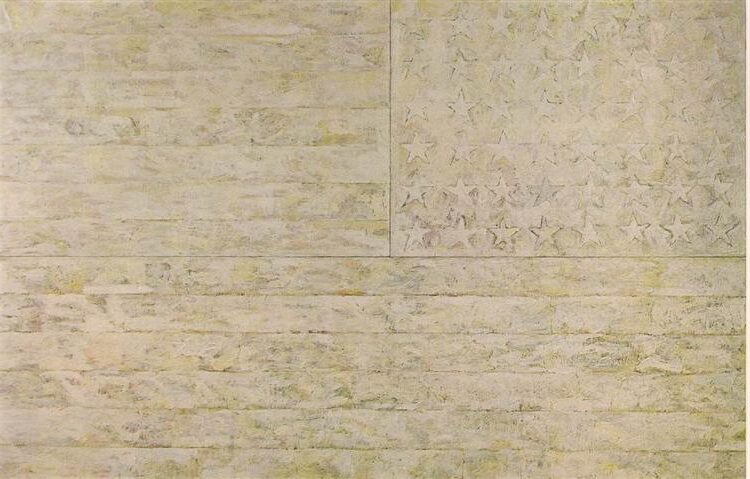
White Flag, 1955, by Jasper Johns
His art is now prominently featured in major institutions worldwide. The Museum of Modern Art, Whitney Museum of American Art, and National Gallery of Art hold significant collections of his work.
In 2021, the unprecedented “Mind/Mirror” retrospective was simultaneously held at the Whitney Museum and the Philadelphia Museum of Art. This landmark exhibition featured over 500 works spanning Johns’s entire career.
Johns’s paintings command some of the highest prices in the art market. His “Flag” (1954-55) sold for $110 million in a private sale in 2010, making it one of the most expensive paintings by a living artist at that time.
Influence on Later Movements
Johns’s methodical approach to everyday objects paved the way for Pop Art, though he never aligned himself with the movement. His emphasis on process and surface influenced Minimalism and Conceptual Art in the 1960s and beyond.
His collaborative work with choreographer Merce Cunningham and composer John Cage created new possibilities for interdisciplinary art. These partnerships helped redefine the boundaries between visual art and performance.
Art critic Frank O’Hara recognized Johns’s significance early, writing about how Johns transformed ordinary objects into complex visual experiences. This approach to familiar imagery challenged viewers to reconsider everyday visual culture.
Johns’s technique of using encaustic (pigment mixed with hot wax) revitalized this ancient medium in contemporary art. His deliberate brushstrokes and textured surfaces influenced generations of painters in their material approach.
Awards and Honors
Johns received the Golden Lion at the Venice Biennale in 1988, one of the highest international recognitions in the art world. This award acknowledged his pivotal role in reshaping modern art.
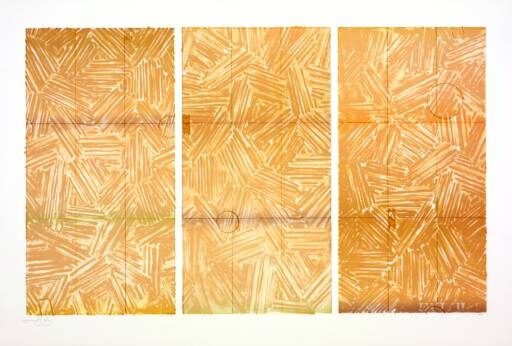
Usuyuki, 1979, by Jasper Johns
In 1990, he was awarded the National Medal of Arts, the highest honor given to artists by the United States government. President George H.W. Bush presented the medal in recognition of Johns’s extraordinary contributions to American culture.
Johns received the Presidential Medal of Freedom in 2011 from President Barack Obama. This further cemented his status as not just an artistic innovator but a significant American cultural figure.
The artist established the Foundation for Contemporary Arts with composer John Cage in 1963, creating an organization that continues to support experimental artists today. This philanthropy extends his influence beyond his own artistic production.
Frequently Asked Questions
Jasper Johns has left a significant mark on American art through his distinctive paintings and techniques. His work challenged viewers to reconsider familiar objects and symbols through innovative approaches.
What is Jasper Johns most famous work?
“Flag” (1954-55) stands as Jasper Johns’ most recognizable and influential artwork. This encaustic painting of the American flag challenged viewers to see a familiar symbol as both an image and an object.
Johns’ “Target” series also ranks among his most celebrated works. These pieces feature concentric circles that explore the relationship between everyday symbols and artistic representation.
His “Numbers” and “Map” pieces have similarly become iconic in the art world. Each work transforms ordinary visuals into complex artistic statements through his distinctive techniques.
What are some notable characteristics of Jasper Johns’ painting style?
Johns is famous for his use of encaustic, a technique involving pigment mixed with hot wax. This method creates textured surfaces with rich, distinctive qualities that add depth to his work.
He frequently employs recognizable symbols and objects as subjects. Flags, targets, maps, and numbers appear repeatedly throughout his career as vehicles for artistic exploration.
Johns often incorporates collage elements and found objects in his paintings. Newspapers, fabric, and other materials add layers of meaning and texture to his compositions.
His work typically balances between abstraction and representation. This intentional ambiguity invites viewers to question how we perceive everyday objects.
How did Jasper Johns contribute to the Pop Art movement?
Johns served as a crucial bridge between Abstract Expressionism and Pop Art in the late 1950s. His focus on everyday objects helped shift attention from emotional expression to cultural symbols.
While not strictly a Pop artist himself, Johns influenced key Pop Art figures like Andy Warhol and Roy Lichtenstein. His approach to common imagery paved the way for Pop Art’s exploration of consumer culture.
Johns challenged traditional notions about what constitutes appropriate subject matter for art. By elevating mundane objects to fine art status, he helped expand the boundaries of artistic expression.
Can you list important milestones in Jasper Johns’ career?
Johns’ first solo exhibition at Leo Castelli Gallery in 1958 marked his breakthrough into the art world. The Museum of Modern Art purchased three pieces from this show, an extraordinary endorsement for a young artist.
In 1988, Johns’ “False Start” sold for $17.05 million, setting a record at that time for the highest price paid for a work by a living artist.
The Museum of Modern Art in New York held a comprehensive retrospective of Johns’ work in 1996, cementing his position as one of America’s most important artists.
In 2011, Johns received the Presidential Medal of Freedom, the highest civilian honor in the United States.
What influenced Jasper Johns’ artistic development?
Marcel Duchamp’s ready-mades significantly influenced Johns’ approach to everyday objects. Duchamp’s concept of transforming ordinary items into art resonated throughout Johns’ career.
Johns’ friendship with Robert Rauschenberg proved deeply influential. Their artistic dialogue during the 1950s helped both artists develop new approaches to materials and subjects.
His early work at Gemini G.E.L. printmaking workshop expanded his technical repertoire. This experience helped Johns develop his distinctive approach to printmaking as a significant aspect of his artistic practice.
Johns was also influenced by his experiences in the military and life in New York City. These personal experiences informed his choice of imagery and artistic concerns.
How has Jasper Johns’ artwork evolved over time?
Johns’ early works from the 1950s focused on familiar symbols and objects. These pieces established his signature approach to flags, targets, and numbers.
During the 1960s and 1970s, Johns introduced more personal and enigmatic imagery. His work became increasingly complex, incorporating crosshatching techniques and more abstract elements.
By the 1980s and 1990s, Johns began incorporating references to other artists’ works. These pieces reflected a growing interest in artistic dialogue and the history of visual representation.
In his later career, Johns has continued to revisit and reinterpret earlier themes. This creative recycling demonstrates his ongoing exploration of perception, meaning, and artistic representation.

